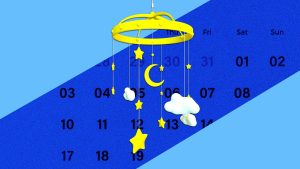 Last week at an event John asked me straight up; “Don, over the last year my small business has struggled to gain new clients. It’s never been a problem before but if I don’t figure this out my business will fail and I don’t want to be another statistic!”
Last week at an event John asked me straight up; “Don, over the last year my small business has struggled to gain new clients. It’s never been a problem before but if I don’t figure this out my business will fail and I don’t want to be another statistic!”
I hear stories like John’s everywhere I go.
When it comes to the changing landscape of marketing, I hear small business owners over-and-over again say:
“I’m overwhelmed by the vast volume of things to do that don’t seem to generate income”
In fact, some of the more common refrains that small businesses are sharing include:
- Advertising doesn’t seem to work for my small business
- I have to spend more marketing just to make a little over time
- I get little to no traffic to my website
- The traffic I do get to my website does not convert into new customers
- No one is telling me they saw … on my site when they call or stop in my place of business
Is that you?
Do you feel that your business is struggling and you don’t understand why?
Do you look in your marketing and sales funnels and you feel that all you see is money going out but little coming in?
There could be a good reason why and today I’m going to share with you what it may be.
Are you ready?
The Reason Your Small Business May Be Struggling May Be Obvious but Overlooked
Sometimes the obvious is not always obvious.
For example, some businesses are legitimately struggling and going out of business due to circumstances beyond their own control.
Perhaps it’s a Federal, State, or local regulation that is forcing higher than expected expenses.
Maybe taxes or healthcare expenses for employees are rising faster than you bring money in.
These things, and much more, may all be true.
But, I theorize that for many small businesses it comes down to supply and demand of their products and services and the ability of the business to successfully market to their audience.
Assuming that you don’t have regulatory or external challenges beyond your control, there are things you can do right now to help your business get on a trajectory to growth by excelling in marketing.
Over the last twenty years, I’ve learned that if your marketing is exceptional, your sales will be easier.
If your message is in alignment with the needs of your prospects and customers, your sales will be easier.
If you focus on marketing and messaging exceptionally well, your business has an opportunity at growth.
Marketing is as much an art as it is a science in 2016.
It used to be that all you had to do was reach a large enough audience and you could generally be assured a 1% – 3% response that might net a 3% – 20% profit.
Those days are obviously gone.
People no longer respond to being treated like a number.
What people do respond to is feeling like a business understands them, their problems, needs and desires; and is interested in a mutually beneficial relationship.
Let me tell you secret right now… you have to promise not to get mad at me if you keep reading.
Marketing Takes Work!
There I said it. I hope you’re not mad at me.
Gone are the days that a small business can throw money at people through mass marketing on TV, radio, print or even your website and people come and buy from you.
The dynamics have changed.
Here is one more secret for you…
STOP following those who create cute strategies and gimmicks that trick people into buying what they have to offer and stop doing what they are doing.
Marketing is about your prospects and customers, what makes you unique, your message and how your message aligns with your prospects and customers.
Sure, gimmicks may earn you some quick sales, but it doesn’t earn lifetime customers and clients.
Years ago, I discovered that true profits and business growth doesn’t happen with one sale.
Profits happen when you have repeat sales.
But all sales start with marketing.
So how do we earn new customers and repeat sales that help us grow our business and reduce the likely hood of failure?
I’m going to share with you in the big picture two things that can make a difference for you today!
#1 – Get Extreme Clarity on the Business You’re Really In
Marketing is a function of clarity.
Clarity of…
- Knowing your customers “specific” problems, needs and desires.
- Knowing “specifically” who your customers are; i.e. their specific situations, circumstances, dreams, goals and importantly… how they feel about each one of these things individually.
- How your products or services are part of the solution for them.
Many small businesses believe they have a strong message and brand until they are challenged or confronted with specifically identifying it.
Right now, if you’re feeling a little, or a lot, of anxiety or apprehension then you already know that you don’t have the specific message you need to be relevant to your prospects and customers.
Therein lays the difference between bad marketing and great marketing…
RELEVANCE!
Does the customer believe your small business is relevant to them?
Have you given them a reason to want to do business with you?
Have you demonstrated that you understand them and are the one they should use to solve their problem, meet their need or fulfill their desire?
If so, you’ve just made marketing that much easier.
Not that it’s ever going to be truly easy.
There will be periods of plenty and periods of drought.
It’s the cycle of life and business.
But if you get your message right, then your marketing cycles and sales funnels will get less extreme as time goes along.
The charts below illustrate over time what happens to many businesses.
Chart 1 / Cycle 1 – Negative Marketing Cycle

In this cycle many small businesses experience what I call the Negative Marketing Cycle.
When a small business first opens for business they generally have a small infusion of cash.
It could be from loans, investors, savings or even customers.
While the initial growth is exciting, so is the marketing.
But after a short period of time frustration sets in as fewer and fewer prospects enter the sales funnel.
It’s at this point that the temptation (rightly so) is to start marketing like crazy.
A few sales are earned and the business gets busy.
For whatever reason (small staff, high workload, or a mindset that business will keep coming indefinitely) the marketing comes a stop or crawl.
Just because times are good does not mean you should stop marketing!
In fact, you’ll discover that your sales cycles will be all over the board.
You’ll have some who close:
- Immediately
- Over a short time: weeks to a few months
- Six months to two years
No kidding, I’m closing a client right now that first contacted me for a website over two years ago. But, the timing for them wasn’t right.
You don’t want to be in a position where things are good today and desperate tomorrow.
It happens all of the time to small businesses.
If you’re in this cycle, understand that each cycle becomes more extreme from the highs to the lows.
During the highs it feels busy and good, and maybe a significant corner was turned!
But, the sales funnel is emptying quickly and the trajectory mid and long-term becomes negative and ultimately unsustainable as illustrated in the chart.
At this point some businesses will accept failure and close.
The ones who fight will seek help and turn it around and enter into Cycle 2.
Chart 2 / Cycle 2 – Marketing Maturity Period

As a business grows, it ought to eventually enter cycle 2 and start experiencing a period of marketing maturity.
This cycle is characterized by fewer extreme marketing cycles.
The business is now marketing more consistently in both times of plenty and in times of drought and does not distinguish between the differences for purposes of marketing.
As a result, a small business has a lot more options and flexibility to choose who they provide services and products for instead of feeling the desperation to sell to just anyone.
The sales funnel is always growing and opportunities for failure are significantly decreasing to the point that sustainability is on the horizon.
Chart 3 /Cycle 3 – Full Maturity; Always Marketing

While there are still cycles, the number of opportunities, new prospects and cash flow do not go negative any longer.
Marketing is a premium and is expected at all times.
The business now can manage growth, expectations and predict upcoming downturns and upturns easier, and plan appropriately as a result.
In this cycle, the business has become highly profitable and scaling the business becomes exciting as new opportunities are presented due to all of the marketing that is consistently happening.
What Kind of Marketing Should You Be Doing?
That can be a difficult question because there are a lot of options.
I teach that before you answer this question you must discover what business you are “really” in.
That means you have to understand your business from the perspective of the consumer.
Unfortunately, consumers believe that we as businesses (regardless of whether you’re business-2-business or business-2-consumer) don’t care about them and that we are out for number one.
There are a lot of reasons for this, but I’m going to focus on just one… it’s because your message says that you only care about you regardless of whether you do or not.
Does your website, blog, videos, emails or podcasts only express what you do and how wonderful you are?
Does your marketing only talk about features and benefits?
If so, and it likely does, then you’re message is completely off.
A message that is relevant to the prospect or customer is one that focuses on them, their problems, needs, wants and desires.
It has nothing to do with you except that you can meet their needs.
But to earn that, you have to demonstrate that you understand them and that they feel you can help them.
You have to earn their trust and prove your competent.
With that said, there are two ways to market and you must do both at one time:
#1 – In Many Different Places
Social media, speaking, networking, email, ebooks, guest blogging… these are all examples of different places to expose your business.
But beware, this can all be a trap if you’re not careful.
 In his book, The Content Code, Mark Schaefer shares a concept he calls “Content Shock.”
In his book, The Content Code, Mark Schaefer shares a concept he calls “Content Shock.”
Mark reminds us that there is more content online created in one day than all of human history up until 2014.
How could one ever consume that much content in a lifetime?
Think about what that means.
Facebook alone has billions of users and the average person has over 200 Facebook friends.
That doesn’t include business pages that people follow.
If their “friends” are posting frequently how are you supposed to see all of their posts?
You’re not… and that’s why Facebook wants businesses to pay for access to the audience so that users generally see what they interact with or want to see on a regular basis and without feeling they are missing what’s important to them because their feed is full of marketing and sales ideas.
It just makes sense.
So, while you must be in many different platforms, realize these places aren’t generally where sales happen.
These are tools to introduce you to your prospects (who you identified in your message) and begin building a relationship with them.
It’s in #2 where your sales processes ought to be happening and if they are not, then your marketing will struggle.
#2 – On Your Website
While you may be interacting on social media, for example, you can’t stay there if you plan to grow your business.
You will need to create value through amazing content (and titles) that inspires people to click through to your website.
It’s on your website that you solve one problem, meet one need, or fulfill one desire for one person.
It’s on your website that you create your sales funnel and move people through the process where they either want to contact you, talk with you or buy from directly from you.
People rarely enter a sales funnel on another platform.
It doesn’t mean it can’t.
I have certainly made sales from social media posts and conversations.
But the ratio is around 10:1 – ten sales through my site for every one sale off it when it comes to digital marketing.
It all Works Together
Whatever you do, your small business must have a consistent, maturing, and sustainable marketing plan that incorporates many different elements at one time.
That means you have to ask yourself how you will take those you’ve met offline and bring them online to reinforce your message and the opportunity for a deeper relationship.
Do you connect with them on LinkedIn, Facebook or even via your email subscription (of course giving them the option to opt-in. Never just put them on your list without permission because you got a business card).
Do you invite them to your website?
Do you create specific landing pages for that one prospect that you met as a recap to a sales meeting or conversation?
And, do you create a short video with next steps?
What about making the online experience more personal?
Perhaps it’s a phone call, Skype video meeting or if you’re local consider meeting at a coffee shop with a goal of not selling them but getting to know them.
And of course, selling them is appropriate… what… you didn’t think I would go there?
Your small business can’t make money if you don’t sell something.
Conclusion
Your small business will fail if you don’t get marketing right.
I promise! It’s true.
Just ask the millions upon millions of small businesses that have failed over the last few years.
The biggest reason for small business failure is because they run out of cash.
But as you’ve seen, a lack of marketing is at the heart of the problem.
If you simply ride the wave and don’t consistently fill your sales funnel, in all probability, you will quickly find yourself in a negative marketing cycle that leads to failure.
Your small business is ultimately dependent upon your ability to meet new prospects, fill your sales funnel and scale with demand.
Just because business is good today, it doesn’t mean it will be tomorrow if you’re not maturing your message and marketing processes.
Would you like to learn more about mass marketing and how to overcome it to increase your sales?
For a limited time, you can have a FREE copy of my highly popular eBook titled “The Shift – Making the Fast Paced Transition from Mass Marketing to Context Marketing.”
Be sure to get it while it’s still free!
Business & Finance Articles on Business 2 Community
(88)
Report Post






